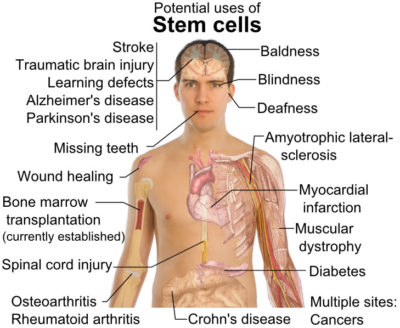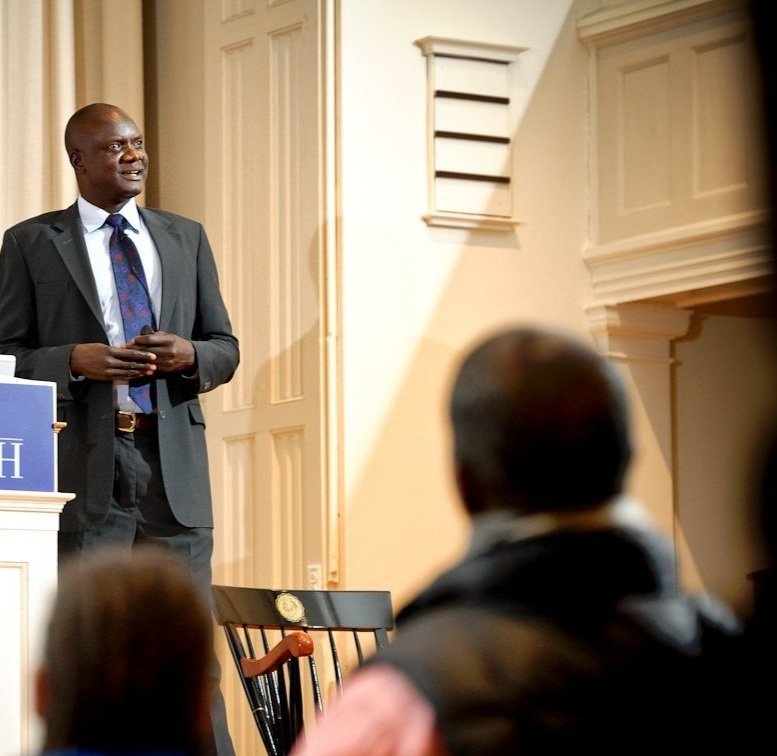Potential grows for stem cell interventions
Jessie Pullen
Mesa Legend
Even though clinics are offering stem cells as a treatment option, people interested in getting treatment done for any number of ailments and diseases are warned by scientists and researchers to do their own research before proceeding with treatment. Stem cells are undifferentiated cells that have the ability to differentiate into specialized cells. Basically they have the potential to become any type of cell such as brain, skin, blood, muscle and so on, according to National Institutes of Health. This is what gives stem cells the ability to assist in treatment for a wide variety of illnesses. Clay Johnson, a stem cell research coordinator at Phoenix Stem Cell commented, “Stem cells have the potential to do so much and they have the potential to cure so many diseases. There are so many unknowns and so many claims and as a result there is a lot of controversy because so many things haven’t been proven yet.”
“Stem cells have the potential to do so much and they have the potential to cure so many diseases. There are so many unknowns and so many claims and as a result there is a lot of controversy because so many things haven’t been proven yet.”
Currently, there are three main types of stem cells being studied according to closerlookatstemcells.org, a website with many articles written by researchers. Each main type produces a combined immeasurable amount of other cell types. There is embryonic stem cells, adult stem cells, and induced pluripotent stem cells. A simplified version to a very complex, multi leveled harvesting and researching process for each of these three main types of stem cells are as follows: Embryonic stem cells, as defined by ScienceDaily, are “…known for their pluripotency, and their ability to replicate indefinitely.”
This specific stem cell type is highly controversial due to the destruction of a pre-implantation stage embryo. Adult stem cells, although filled with potential are multipotent which means they are limited as to how much they can divide. And induced pluripotent stem cells are generated directly from adult stem cells. This gives adult stem cells embryonic-like characteristics without all the controversy of harvesting embryonic cells. Research is still being done on all three types to understand their full potential and understand how they work in conjunction with other cells. The Phoenix Stem Cell Treatment Center is one of many clinics in the state of Arizona to perform adipose, or fat derived, adult stem cell treatments.
 “Stem cells from fat are easily accessible. They maintain the same levels regardless of age and they maintain the same levels regardless of disease state. [Unlike] adult bone marrow stem cells which will decrease in age and decrease in states of disease,” Johnson replied as to why the Phoenix Stem Cell Treatment Center used these stem cells as opposed to embryonic or pluripotent stem cells in their procedures. Johnson could not provide specific percentages or numbers of success rates of Adipose derived stem cells treatments. Also due to the fact stem cells are still in their research phases, he mentioned insurances will not help pay for expensive treatment costs. He said, “Some people have astonishing success and others don’t experience any differences whatsoever.
“Stem cells from fat are easily accessible. They maintain the same levels regardless of age and they maintain the same levels regardless of disease state. [Unlike] adult bone marrow stem cells which will decrease in age and decrease in states of disease,” Johnson replied as to why the Phoenix Stem Cell Treatment Center used these stem cells as opposed to embryonic or pluripotent stem cells in their procedures. Johnson could not provide specific percentages or numbers of success rates of Adipose derived stem cells treatments. Also due to the fact stem cells are still in their research phases, he mentioned insurances will not help pay for expensive treatment costs. He said, “Some people have astonishing success and others don’t experience any differences whatsoever.
“Part of the research is to figure out why some people have a response to treatment and why others don’t. We follow patients for five years after their stem cell treatment in order to track results.” During this five year period, Johnson said they give out surveys to their patients to record how they are feeling and to see if their symptoms have been alleviated since they started stem cell treatment. Jack Mosher, scientific affairs manager for the International Society for Stem Cell Research (ISSCR), commented reasons as to why the public should be wary of stem cell treatment clinics. “In terms of basic research… there’s lots of progress being made in understanding stem cell function and basic biology and how that is basically going to be applied to treating diseases.” He said only a handful of treatment options have been widely accepted by the global medical community.
A few of these treatments include bone marrow transplantation to treat diseases like sickle cell anemia, certain blood cancers like leukemia, and skin grafts. “But beyond that most other stem cell based interventions at this point are experimental and have yet to be proven as safe and effective. For those people really considering stem cell based interventions, they really need to bring a healthy skepticism to any treatment they may be considering.” Unlike medications that are metabolized and eliminated through your body, cells have the potential to stay in the human body for an entire life span. “[Cells] could persist a lifetime and potentially be migratory and may secrete bioactive compound. More work needs to be done to understand how these cells can properly be used to treat different diseases.”
The Food and Drug administration has a long process for clinics to undergo when it comes to being officially approved for stem cell treatment in patients. “If anyone is looking into getting any stem cell based intervention [they should] consider one that is FDA approved,” according to Mosher. “The Food and Drug Administration has a rigorous process one would undergo to obtain FDA approval, primarily demonstrating safety and efficacy particularly in treatment and going through FDA trials.” Stemcells.org is a source recommended by Mosher to assist anyone interested in looking for further facts and information regarding stem cells and their unique nature.









